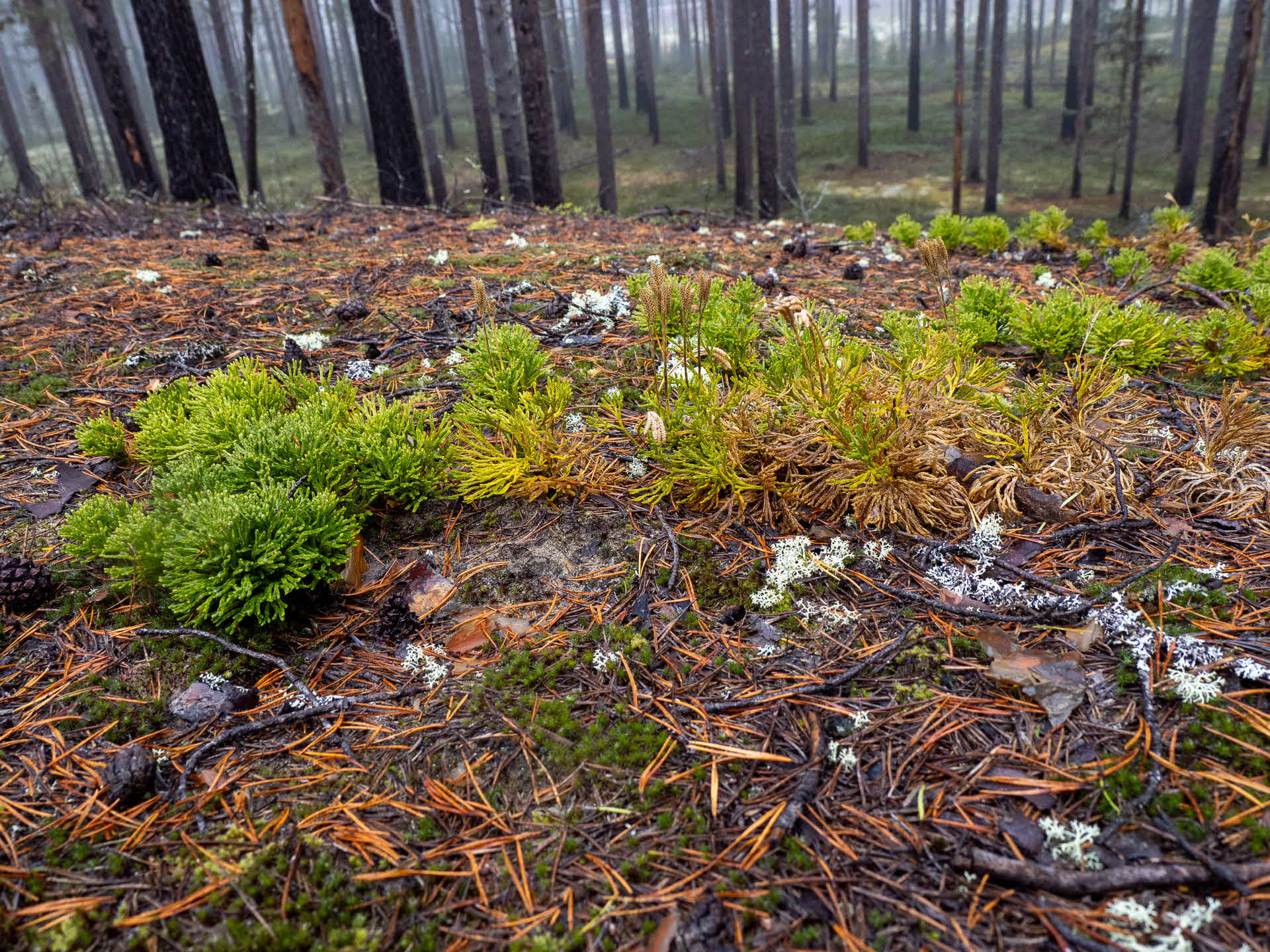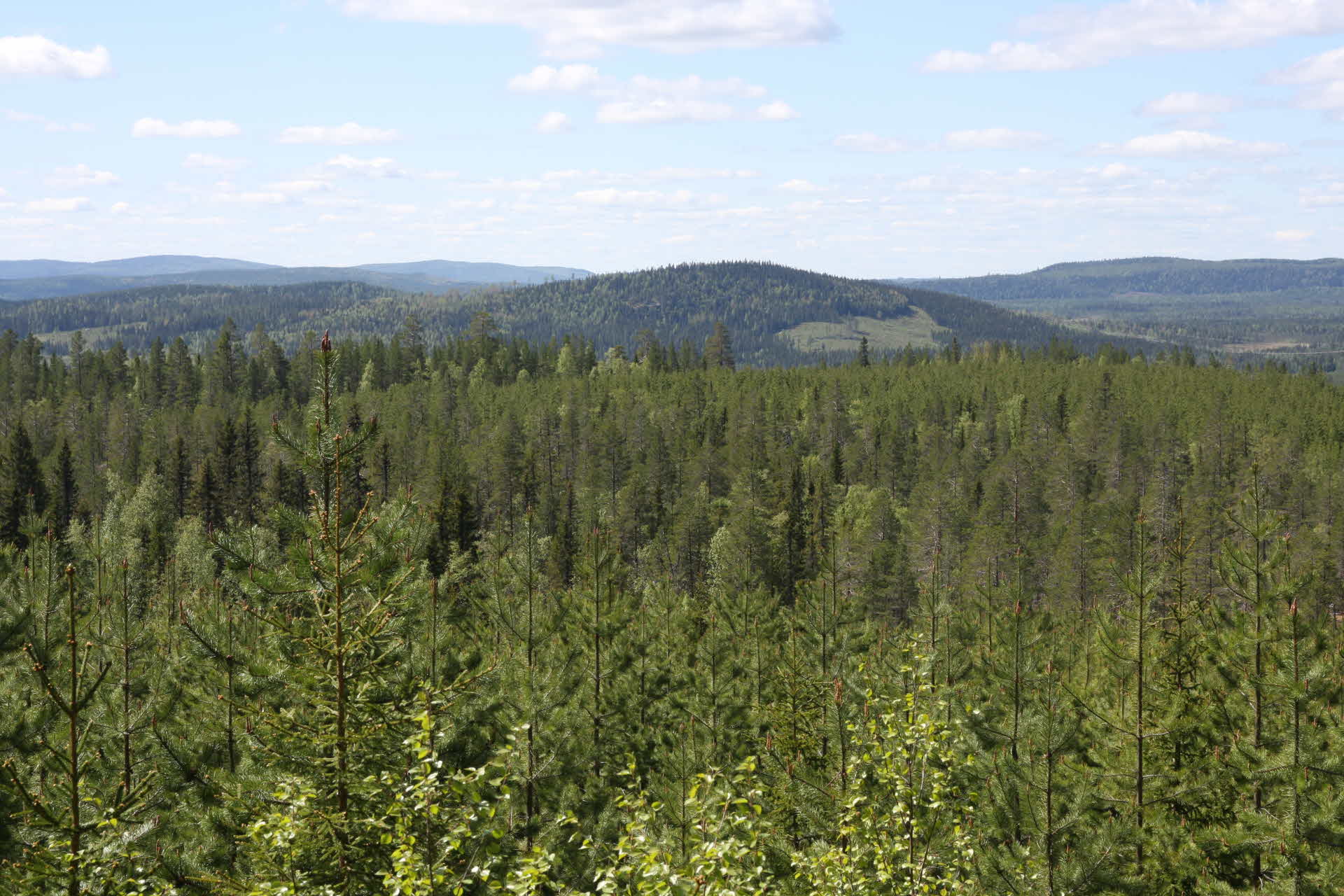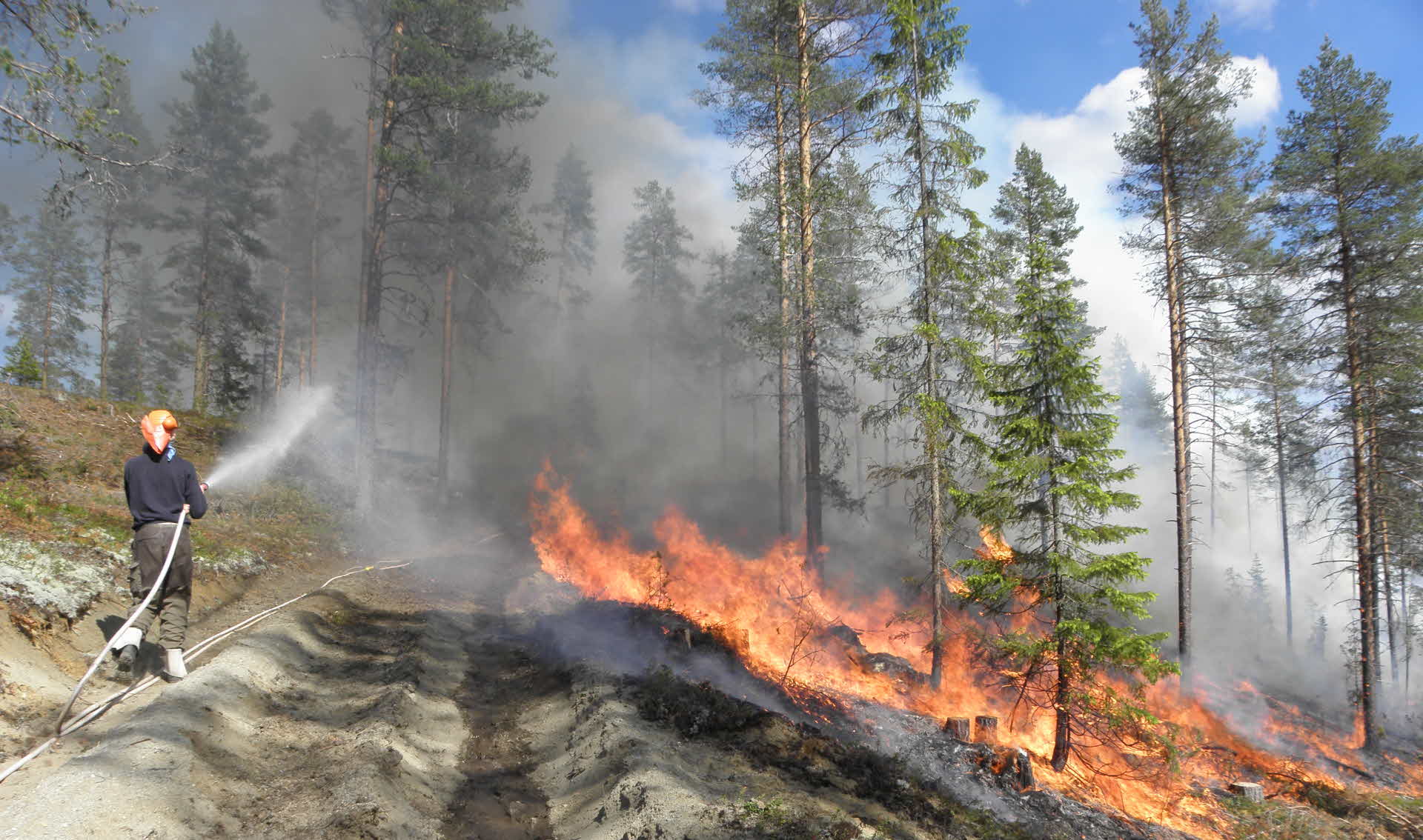
- FOREST
- SCA's FORESTS
- BIODIVERSITY
- BURNING FORESTS – FOR NATURE’S BEST
Burning forests – for nature’s best
Prescribed forest fires is one of the most effective nature conservation measures that we can perform. Through fire, we create habitats for species that benefit from the fire or that are dependent on forest fires to be able to survive.
Before humans began to work the forest, it was largely shaped by natural disruptions, mainly fires, and the animals and plants in our forests are adapted to a life in forests with disturbances. Copying these disruptions is therefore important in our work to create forests in which all species can live.
According to the rules of the FSC®, we need to burn a minimum of 5% of the rejuvenation area in terms of dry, healthy land, during a five-year period.
We mainly burn pine forest because these were the types of forests that were often ravaged by fire in the past. If there is spruce in the designated area, we fell that first. The point is that fire kills spruce trees, while pine trees often survive.
Safety first
Safety is the most important aspect when we carry out prescirbed forest fires and all work is conducted under highly controlled forms using experienced and knowledgeable personnel. The most important thing is to create effective and clear boundaries for the area to be burned. Preferably, there should be a road, a lake or a river as an outer boundary. In addition, we place water hoses along the entire perimeter of the designated area.
There must be no spruce trees or old, dead birch trees adjacent to the fire. We remove everything that could result in smoldering material crossing the boundary.
Right weather
The ground and weather conditions must be favorable for the burning to be a success. When the ground is warm and dry, burning has a positive effect. The wind conditions must also be right. It is important that the fire does not become too fast and strong, and instead maintains moderate intensity.
Benefiting many species
Forest marked by fire, with dead wood and damaged pines that can become old are a rarity in the forest. Burning benefits species that are dependent on these environments.
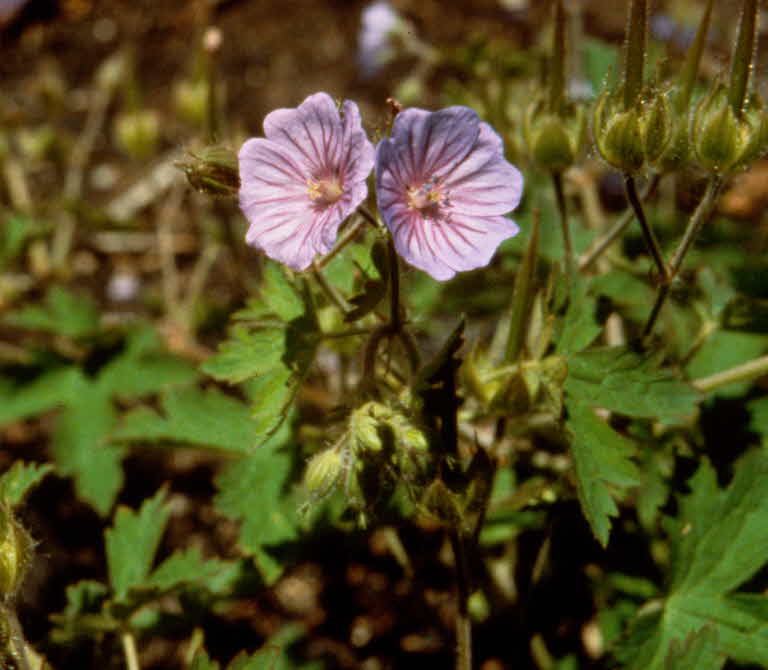
One example is hypocenomyce anthracophila, a lichen found on burnt stumps, and another is Geranium bohemicum, the seeds of which can lie in the ground for up to 100 years and only germinate when they are exposed to the heat after a fire.
Certain soil fungi such as hydnellum also benefit from fire, as does the daldinia loculata fungus, which looks like a black pingpong ball and grows in burned birches. Even various beetles and other insects stream in after a fire to lay eggs in damaged or dead wood. The coal-black jewel beetle can smell a fire from tens of kilometers away. It has heat-sensitive sensors on its abdomen and often arrives at the site of a fire before the fire is completely extinguished.
The three-toed woodpecker likes to peck nesting holes in dead wood and is usually present in the year following forest fires.
Photo: Geranium bohemicum
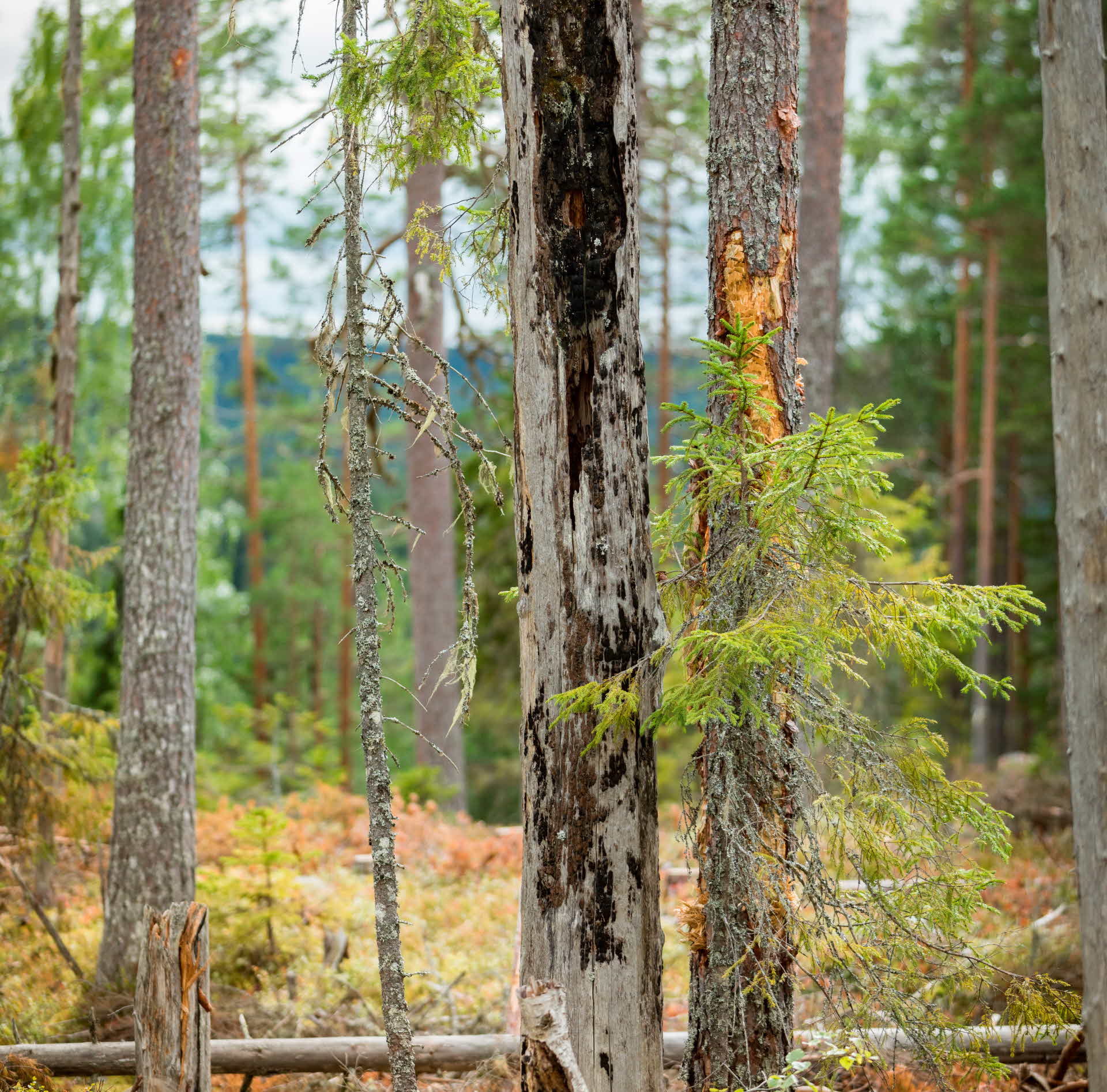
Old trees and dead wood
Many pine trees can survive a fire and become very old as a result of the special wood that is formed when the pine trees are damaged by fire and the wood is impregnated with tar substances. This makes the wood extra robust against rot and when the tree has died, it can remain standing for several hundred years. When the tree subsequently falls over, it remains lying on the ground for another several hundred years. In this way, it benefits many different species for a very long time.
Photo: Michael Engman
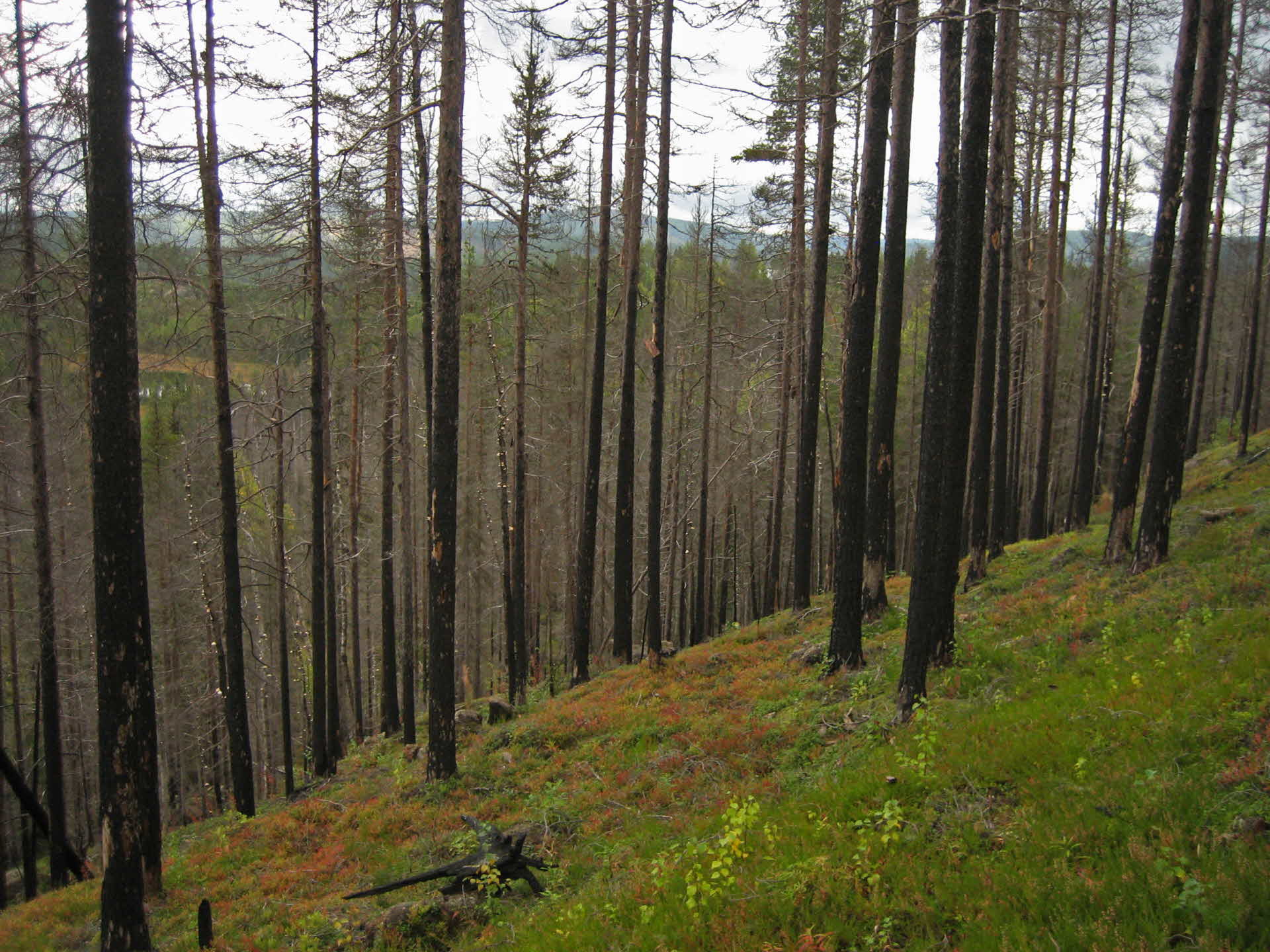
Gap-filled forest of all ages
The forests formed by many fires are often sparse and gap-filled, with trees of various ages and many trees that are very old. On pines that have survived one or more fires, it is possible to see so-called fire wounds, which comprise damage to the tree trunk when the bark has been exposed to a high level of heat. After a really strong fire that has killed nearly all trees, there may be a so-called broadleaved succession, which is an area where mainly deciduous trees grow, such as birch and aspen.
Photo: Magnus Andersson
